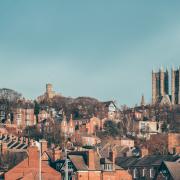Chris Hogg explains why his new book is a pictorial love letter to the Dales

In the mid-1970s, as part of a college project, I visited some of the older residents of Coverdale, copying photographs from their albums and listening to their tales of life in the dale before and after the First World War.
They were all eager to talk and it was a great pleasure to sit and listen to the stories. I even had my grandparents’ courting habits described to me by an old resident of Carlton, who in his youth happened on occasion to be the other side of a field wall from the couple.
Later, I exhibited a number of photographs in Carlton Memorial Hall and then put them away as work, marriage and children took centre stage.
I chose Coverdale for my project because my family had lived in the dale for well over 200 years, prior to my grandmother moving away from Melmerby in 1953. I am told that my family had settled in Coverdale after trekking down the drover’s road from the Scottish Borders.
My own experience of the dales life had been in the 1960s, when my father was posted to Askrigg in Wensleydale as village constable.
Comparing the old and modern images in the book, what is immediately noticeable is the rise of the motor car. Where once everyone walked to their destination, and the towns and villages were empty apart from the odd pony and trap, a car now occupies almost every available space. For example, in the 1800s a racehorse would be walked to a race; Newmarket was almost two weeks away from Middleham. Now, the horse is loaded into a van and can be there in a few hours.
Nothing remains the same. Life and work are constantly evolving. Where farming was the old calling and lambing, dipping, shearing and marketing were events that marked the seasons. Where men mined the hills for lead and coal, new industries have now developed – particularly tourism, which is so very important to the local economy.
The influx of new residents, some to their second homes, all contribute to the ever-changing life of the dales. I hope my book gives an impression of how the lives of the dalesfolk, and their environment, have changed in the past 90 years and more.
It would be interesting to imagine what corresponding photographs taken 100 years from now would reveal. Maybe that’s a project for my great-grandchildren.



























